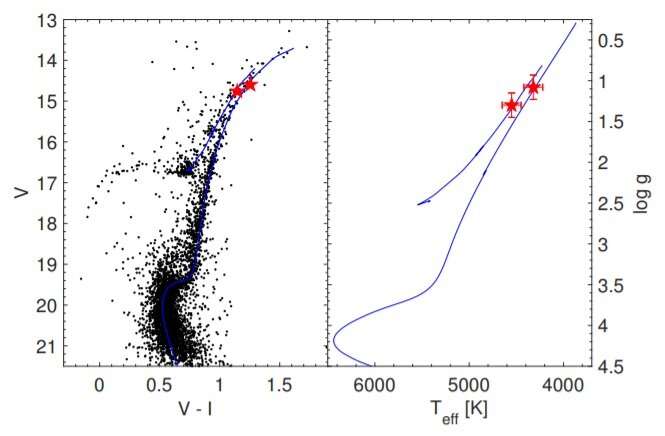May 3, 2021 report
Study investigates chemical properties of globular cluster NGC 1261

Using the Magellan Inamori Kyocera Echelle (MIKE) spectrograph, astronomers have conducted a chemical abundance study of a galactic globular cluster known as NGC 1261. Results of the research, published April 22 on arXiv.org, provide insights into chemical composition of this cluster.
Globular clusters (GCs) are collections of tightly bound stars orbiting galaxies. Astronomers perceive them as natural laboratories enabling studies on the evolution of stars and galaxies. In particular, globular clusters could help researchers better understand the formation history and evolution of early type galaxies, as the origin of GCs seems to be closely linked to periods of intense star formation.
At a distance of some 53,000 light years, NGC 1261 is a GC in the Milky Way's outer halo. The cluster is 10.3 billion years old, has a mass of about 341,000 solar masses, and metallicity at a level of -1.38. The chemical composition of NGC 1261 is still poorly understood, however some studies managed to determine abundance ratios for over 20 elements and suggested that multiple stellar populations may be present in this GC.
A team of astronomers led by Andreas J. Koc-Hansen of the Heidelberg University, Germany, decided to take a closer look at NGC 1261, focusing on its chemical properties. By employing the MIKE spectrograph mounted on the 6.5 m Magellan2/Clay Telescope at the Las Campanas Observatory, Chile, they performed a chemical abundance analysis of this cluster.
MIKE allowed the researchers to measure 31 species of 29 elements in two stars of NGC 1261, by conducting a standard analysis based on equivalent width (EW) measurements and spectral synthesis. The results suggest that the cluster is moderately metal poor—with a metallicity of approximately -1.26. However, despite its relatively low metallicity, it showcases heavy element abundances that are consistent with r-process nucleosynthesis.
"In particular the Eu-overabundance quantitatively suggests that one single r-process event, such as a neutron-star neutron-star merger or a rare kind of supernova, can be responsible for the stellar enhancement or even the cluster's enrichment with the excess r-material," the scientists noted.
Moreover, the study found that the light elements like sodium (Na), oxygen (O), magnesium (Mg), and aluminum (Al) differ significantly between the two investigated stars, in contrast to the majority of other elements with smaller scatter. This supports the scenario that multiple generations of stars coexis in NGC 1261.
All in all, the results of the study provide some hints regarding the origin of NGC 1261. According to the authors of the paper, this GC was born in the Gaia-Enceladus galaxy and has been subsequently accreted into the galactic halo. It is assumed that Gaia-Enceladus merged with the Milky Way between 8 and 11 billion years ago. The researchers added that in general NGC 1261 appears chemically very similar to Gaia-Enceladus in that it occupies the same mean metallicity and alpha-enhancement.
"Thus far, the merger-GC ties are likely, but to further sculpt this picture, the addition of a chemical abundance space is imperative," they concluded.
More information: NGC 1261: an r-process enhanced globular cluster from the Gaia-Enceladus event, arXiv:2104.11243 [astro-ph.GA] arxiv.org/abs/2104.11243
© 2021 Science X Network




















